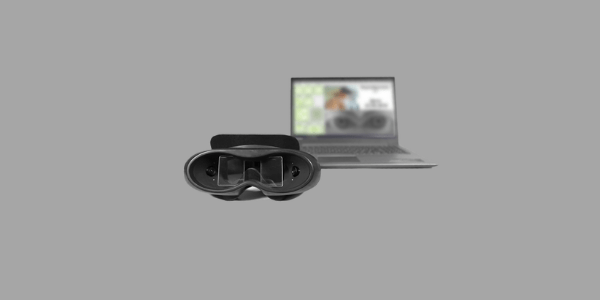Is this you?
“I never stretch, I don’t have enough time” or “I can barely squeeze my weights or cardio in – so I skip my stretches”… Sound familiar?! You are not alone. In fact it is very common for many people that exercise regularly to skip the stretches…
Stretching should be like brushing your teeth.. You do it everyday, and you don’t think twice about it. It is just part of your daily routine. Stretches need to be part of your daily routine too; a few minutes a couple of times of day will result in fantastic changes in your body’s flexibility and joint range of motion. Stretching is among the few exercises that benefit the whole body, not just your muscles and joints, but your cardiovascular and nervous systems as well. It is particularly beneficial when done regularly. Knowing the benefits that stretching provides to the body may make you more inclined to stretch on a regular basis.
The major benefit of stretching is that it improves your body’s flexibility. It acts to strengthen the tendons attaching the muscles to the bone and therefore the muscle has a greater ability to absorb the energy created during sport. Studies have shown that people who stretch frequently have a much lower risk of muscle strains and sprains. Compliant, flexible muscles can withstand most types of sudden movement; non-compliant muscles cannot do the same and consequently can lead to injury. Frequent stretching also increases your body strength; muscles work much better in lengthened positions, which promote more power. Stretching is among the few exercises that benefits the whole body and is one of the kindest things you can do for your body!
Top ten reasons why YOU should stretch:
1. Increases joint range of motion.
We are born with fantastic range of movement when it comes to flexibility. Think of a baby sucking on its toes…can you still do that? Where did that flexibility go? What happened? Most of us don’t bother to keep up with that type of range of movement as we get older, which means we lose our flexibility. If you don’t stretch it, you lose it!
Definition: Range of motion is the normal range of movement for a joint, in other words how far it can be bent and how far it can be stretched…so if normal range of motion is limited these things can happen…
- mechanical problems
- swelling
- muscle tightness
- joint pain
- inflammation (bursitis, tendonitis)
- injury
- arthritis (degeneration of joint surfaces)
Stretching weakens the stretch reflex, the body’s automatic defense mechanism to over-extension. Holding a stretch for a prolonged period of time habituates the reflex so it reduces its signal. This helps muscles have a fuller range of motion
As you grow older your muscles, tendons, and ligaments tend to grow stiffer; they lose some of their elasticity. If you do nothing about it, this means that the range of movement of your joints decreases. The muscles crossing the joints get tighter and tighter and cause compression of the joint surfaces, which then causes the joint to break down which in turn leads to joint degeneration or arthritis. The result is decreased movement or range of motion. Inevitably you will have troubles with everyday activity. Stretching can help you prevent this.
When muscles are short, range of motion in the joints is compromised. This not only affects your performance during exercise but can hinder day-to-day, normal motions. Tasks that used to be simple, such as reaching for a can off of the top shelf, or putting on your socks can become difficult. A regular stretching program maintains healthy joints.
2. Reduces your risk of injury.
A flexible muscle is less likely to become injured. By increasing the range of motion in a particular joint through stretching, you decrease the resistance on your muscles during various activities. Stretching is believed to help to prevent injury to tendons, ligaments. Common injuries incurred due to lack of flexibility in runners are shin splints, Achilles tendonitis, knee pain, IT band syndrome, stress fractures and plantar fasciitis.
3. Helps relieve post-exercise aches and pains.
After a workout, stretching the muscles will regain the pre-workout length and decrease the compression on the joints. Aches and pains after exercise can be avoided if muscle tension over the joints is minimized. The best part is, though, that by stretching after a workout, it sets you up for a better the workout the next time! Some studies have shown that performing stretching exercises reduces muscle soreness felt he next day by decreasing the build-up of lactic acid in muscles (DOMS – Delayed Onset of Muscle Soreness).
4. Improves posture.
Stretching your muscles, particularly those of the lower back, shoulders, hips and chest will help keep your spine in an optimal alignment which improves your posture, promotes efficiency in exercise and ease of breathing.
Many people’s soft-tissue structures has adapted poorly to either the effects of gravity or poor postural habits. Stretching can help realign soft tissue structures, thus reducing the effort it takes to achieve and maintain good posture.
5. Helps reduce or manage stress.
Well stretched muscles hold less tension. Tension = less stress! Stretching can also help to reduce your resting heart rate which results in a decrease of your sympathetic nervous system (the flight or fight system) which in turn leads to decreased physical and mental stress and an increase in psychosocial well-being.
6. Reduces muscular tension and enhances muscular relaxation.
Stretching allows the muscles to relax. Habitually tense muscles tend to cut off their own circulation resulting in a lack of oxygen and essential nutrients. Stretching realigns muscle fibers and speeds up the recovery process after exercise. Shortened muscle does not recover as quickly due to the lack of circulation and therefore hindering muscle growth and effectiveness of the next workout.
7. Improves mechanical efficiency and overall daily and functional performance.
Since a flexible joint requires less energy to move through a wider range of motion, a flexible body improves overall performance by creating more energy-efficient movements. Muscles can generate more power in lengthened positions than when short. Full range of motion in a joint allows the muscle to work throughout its full range and thus is more efficient. Stretching will not only help to improve your performance in sports, it also will increase your agility. Whether it is being quick on your feet or having t he ability to maneuver around an opponent, stretching will improve your fitness level.
8. Neuromuscular coordination.
Another little-known benefit is increased neuromuscular coordination. Studies show that nerve-impulse velocity (the time it takes an impulse to travel to the brain and back) is improved with stretching. This helps opposing muscle groups work in a more synergistic, coordinated fashion. Studies have shown that regularly stretching also increases balance by enhancing the proprioceptive response of the joints.
9. Promotes circulation.
Stretching increases blood supply to the muscles and joints which promotes nutrient and oxygen transportation and improves the circulation of blood through the entire body. After exercise, muscles need to repair themselves and fibers that are entangled impede the recovery process. When you stretch a muscle, tension in the fiber increases, aligning the disorganized tissue in the same line – like when you pull on a wrinkled shirt. Prolonged stretching has also been shown to reduce cholesterol and significantly reverse coronary artery disease. The exercise that the stretches provide for the body increases the amount of blood flow through the body. Increased blood flow removes wastes from the body more quickly. It also moves oxygen from the lungs to the brain and other organs in larger amounts. The blood also flows through the muscles of the body faster. This increases the strength and the health of the muscles in a dramatic way. Your body responds to the exercise it gets from stretching by increasing its flow of blood. A variety of illnesses and disease can benefit from this.
10. Decreases the risk of low-back pain.
Flexibility in the hamstrings, hip flexors and muscles attached to the pelvis relieves stress on the lumbar spine which in turn reduces the low-back injury and pain. Flexibility in the hamstrings, hip flexors, quadriceps, and other muscles attaching to the pelvis reduces stress to the low back.
How can I fit stretching in to my workout?
Stretching should be a part of your daily routine, whether it is a rest day or day you are going for a run. There are simple stretches you can do while watching TV, on the computer, or getting ready for bed. Stretching is easy, and so is finding time to do it every day. It doesn’t require fancy equipment or changing into gym clothes. It takes so little energy that chances are you won’t even break a sweat! Stretching habits can be slowly worked into a multi-tasking routine. Instead of sitting still while watching television or talking on the phone, stand up and start getting flexible. You will feel the positive difference in no time. The more frequently you do it, the less difficult it will become!
– Do a few stretches at a time.
– Sign up for a yoga or stretch class
– Buy a stretching DVD
– Combine them with other tasks you are doing…multitask!
– Pick a consistent time every day. It does not have to involve a huge time commitment, but stretching can end up giving you huge results!
I am confused. Do I stretch before or after exercise?
There is a lot of controversy out there about when to stretch, but it is safe to say that stretching before and after each run is a good idea. Before a run it is best to warm-up for a few minutes with a light jog and then to perform the running stretches. This prepares the muscles for activity. After the run it is best to stretch right away while your muscles are still warm; stretching after will help return the muscles to their pre-run length.
Stretching should also be done on non-exercise days. Remember, consistency is the key!
Need some pointers? Some keys to effective stretching.
Stretching 101: Key Tips
- Move slowly into the stretch
- Hold the stretch for 30 seconds (minimum) if it is after a run
- Breathe and relax while holding the stretch
- Never bounce while stretching, hold and relax instead.
- Focus on the muscle being stretched and try to lengthen it.
- Breathe in and try to push the stretch slightly further, half-way through the stretch. Breathe in through the nose and exhale slowly through the mouth; it helps to relax the body, increases blood flow through the body and helps to remove lactic acid build-up.
- Move slowly when releasing a stretch
- Stretch both sides. Notice if there is a difference in tightness between sides. Hold a stretch longer on the tighter side if necessary.
- Don’t overstretch (stretches should feel comfortable, not painful)
- Do it regularly! A few minutes everyday is more beneficial than once a week…
NO pain no gain? Not true.
If stretching is done properly, you should not be sore the day after. If you are, then it may be an indication that you are overstretching and that you need to reduce the intensity of the stretches. Overstretching is easily done if the muscles are cold (without any warm-up). During a stretch you are going to feel some amount of discomfort but you need to be able to discern when it is too much. If the pain is severe (ouch! pain), then decrease the intensity. If the stretch starts to feel warm or burning or sharp, it is necessary to ease up on the stretch so that the muscle tissue is not damaged.
Experiencing pain or discomfort before, during or after stretching can be indicative of injury. Some mild discomfort is normal. However, it is easy to over stretch and cause microscopic tearing of the muscle fibres. This can cause some soreness usually one or two days after. You can continue to stretch but very gently if this occurs. If the pain occurs during or immediately after then it may indicate a more serious tear (which may require medical attention). Severe pain usually indicates a serious injury to the joint, muscle or tendon.
Sometimes, muscle pain during stretching is a result of the accumulation of lactic acid in the muscles. Lactic acid build-up occurs with overexertion and/or intense muscular activity. This will occur if you have increased your distance, just started running or after changing the normal activity level of the muscles. Stretching through this type of discomfort is safe and helpful to increasing flexibility.
Muscle spasms that occur while stretching are always a warning sign. A muscle spasm is an involuntary contraction of the muscle. One example of this is a painful muscle cramp. Often muscles that are in spasm are protecting an injured joint. Consequently, stretching through this type of pain can be harmful.
Happy stretching!
Services Offered:
Acupuncture
Dry Needling
Intramuscular Stimulation (IMS)
Physiotherapy
Virtual Physiotherapy
Related Conditions:
Upper and Lower Back
Neck + Cervical Spine
Shoulder + Rotator Cuff
Hips, Legs, Knees






